The Australian Bureau of Statistics (ABS) has released the Q1 wage price index, which rose by 0.9% over the quarter to be 3.4% higher year-on-year:
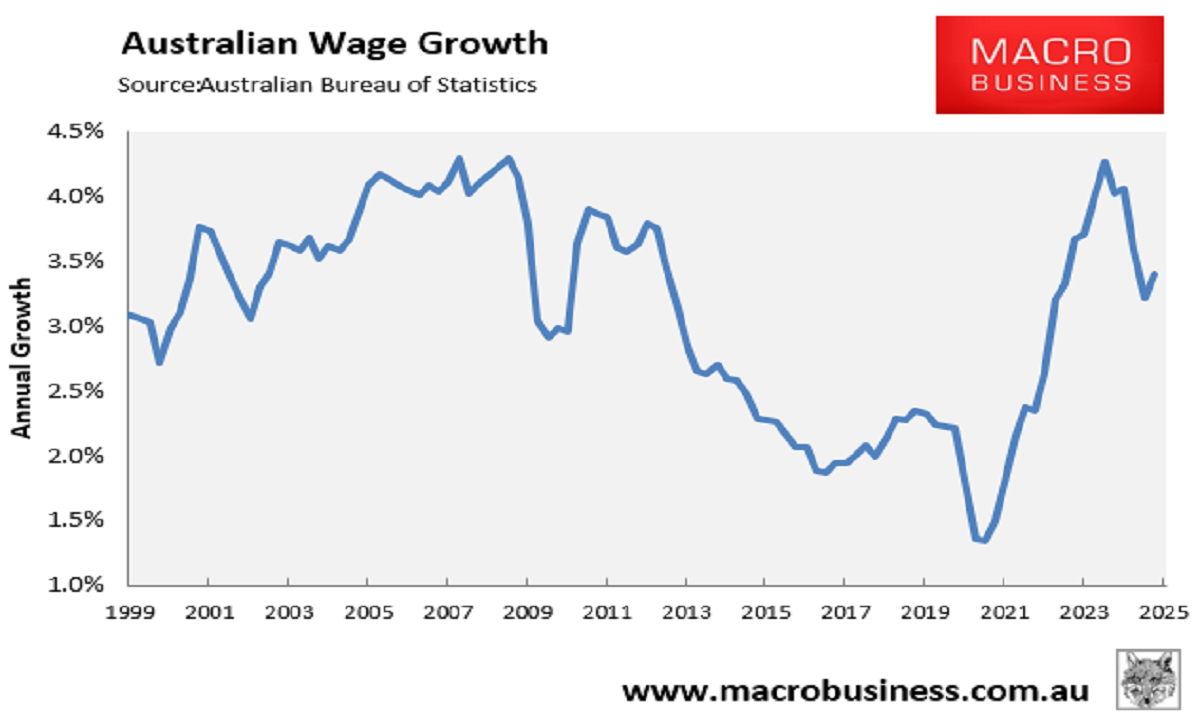
The result was stronger than expected, with analysts tipping a 0.8% rise over the quarter and 3.2% year-on-year.
The rise in wage growth was driven by the public sector, where wages rose by 1.0% over the quarter and by 3.6% year-on-year. By comparison, private sector wages rose by 0.9% over the quarter and by 3.3% year-on-year.
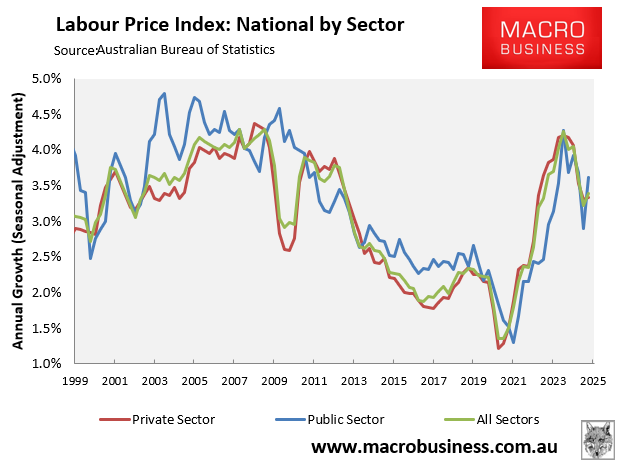
ABS head of prices statistics, Michelle Marquardt, explained the result as follows:
Private sector wage growth was also influenced by administrative wage adjustments due to the Stage 3 Aged Care Work Value Case, and the Early Childhood Education and Care Worker Retention Payment. It was also impacted by regular March quarter wage and salary reviews.
Wages growth in the public sector was impacted by new state-based enterprise agreements, and to a lesser degree, increases paid to aged care workers.
Jobs covered by enterprise agreements contributed to over half of all quarterly growth, for the first time since September 2020.
The larger than usual March quarter contribution from enterprise agreement-covered jobs was mainly driven by the new state-based enterprise agreements in the public sector.
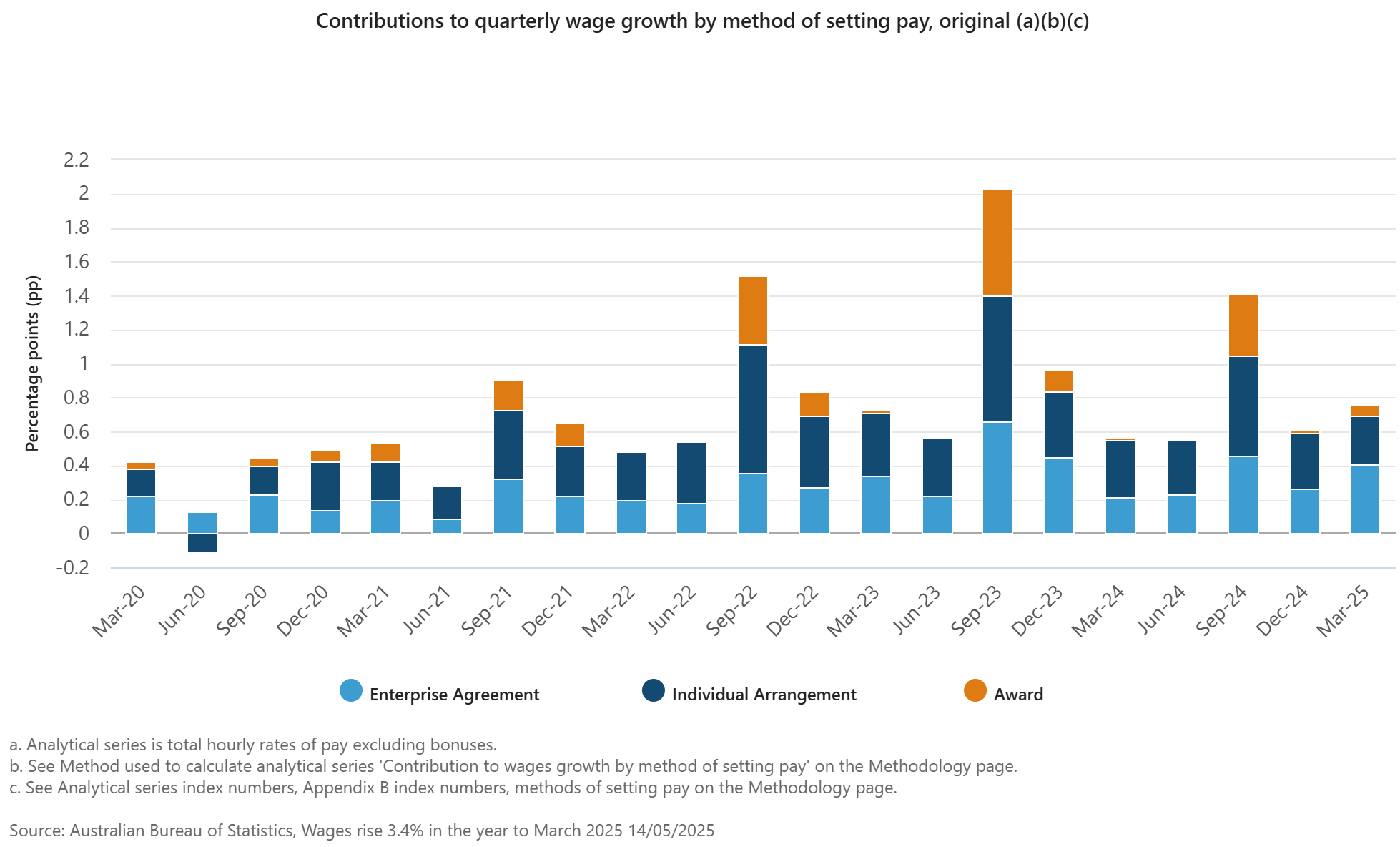
As shown below by Alex Joiner from IFM Investors, wages in Q1 were basically tracking in line with RBA expectations:
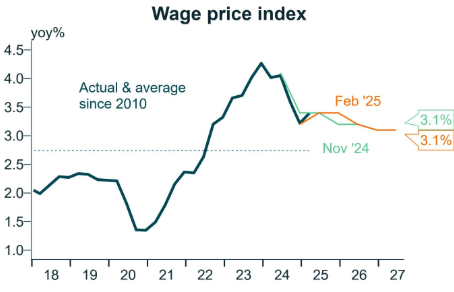
The following chart plots wages deflated by both headline and underlying inflation:
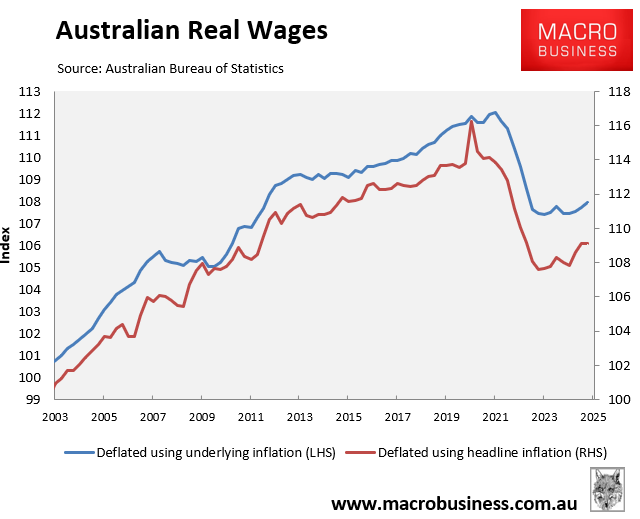
Real wages are tracking 6.1% below their June 2020 peaks deflated by headline CPI and 3.6% below the Q2 2021 peak when deflated by underlying CPI.
Today’s result is unlikely to sway the RBA, which is expected to cut the official cash rate by 0.25% at next week’s monetary policy meeting.

